Discover the big SEO dos and don'ts
Pete Wailes from SEOgadget considers SEO as an industry and reveals what you need to do for better Google rankings.
Over the past decade year, I've worked as a developer, designer and search marketer. In my day-to-day role as CTO of SEOgadget, I spend my time working alongside the search agency side of the business, creating tools, educating the team on technology and design trends, and push for greater inventiveness and innovation in the content we produce as part of our clients' marketing campaigns.
However, I'm aware of the reputation that the industry has, of producing content purely for links and rankings rather than to give amazing experiences to engage users. It shouldn't have to be like this though. Too many people think the best way to market their businesses is to buy the worst quality links from the lowest traffic sites on the web. So what's the industry doing about it, and where does it go from here?
How did it come to this?
SEO as an industry begun as a group of technical people who watched the search engines and how they were operating, deconstructing how they worked and reverse engineering their technologies. Therefore, it's no surprise that, with those people being more technically-inclined (and not marketers), the practice of SEO developed in a fairly uncreative manner. While it's certainly been useful for the web that it exists (much of what search engines do nowadays wouldn't be possible without the better side of the SEO industry to ensure sites are properly crawlable, with semantically marked up data), it's not all roses.

Over the years, we've seen SEOs engage in a variety of tactics, some more effective than others, in an attempt to game the engines. Thankfully, these have slowly become less effective, although there's still holes if you know where to look, or you're willing to brute force them.
The happy result of this though is that the industry has been slowly bent towards a different path, looking at more traditional marketing methodologies to create the content required to get a site to rank. This is an improvement as marketing based on more traditional principles, with an understanding of messaging, branding and targeting will deliver results that can be measured far more tangibly. Rather than evaluating work on quantity of links or on PageRank, we can talk about revenue, goal completions, customer lifetime value and so on.
The challenge we now face is that as an industry, we lack a deep understanding of marketing. Not surprising, as most of the people who make up the industry don't come from a marketing background. In part thanks to this, over the last three or four years we've seen a lot of cargo-cult creativity, with people copying tactics they've seen others employ. They've not understood though why those tactics worked, or what the strategic objectives of those campaigns were.
One result of this has been proliferation and abuse of mediums and methods of content delivery, namely guest posts and infographics, both of which Google has now called out explicitly for abuse. If you read between the lines though, it's not the practice of producing infographics, or of writing for publications that's the issue - it's when these are used as a method of creating links, rather than because they're genuinely useful, or as a result of a desire to connect with a publications audience.
Get the Creative Bloq Newsletter
Daily design news, reviews, how-tos and more, as picked by the editors.
So how do we up our game, as marketers, and produce better ideas, and work with designers and developers to produce seriously interesting content?
A better way
Well, the first thing to note is that it doesn't have to be like this. As the digital industry in general has slowly started to acquire traditional marketing talent (and vice versa), we're seeing it start to produce some truly compelling work. Pieces like Beats by Dr. Dre #showyourcolour, The Feed by Getty Images and Rexona: DO MORE, not to mention more experimental design/content forms like the oft-cited Snow Fall by The New York Times, and Serengeti Lion by National Geographic show real promise.
Further, there's campaigns like Imaginate by Red Bull that couldn't exist anywhere other than digital, which reach millions through really creative storytelling, combined with the inherent shareability that digital content can have. These show a wonderful understanding of the way that the consumer mindset works in 2014. However, while these have all won multiple prizes and serious awards, as well as huge traffic and mindshare for their clients/publications, each has areas where they fall short.
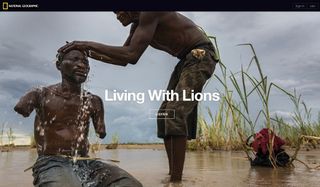
These issues range from failures of cross-browser compatibility to a lack of specificity around the message, failing to ensure the content is findable from search engines and so on. Each would have been easily fixable. If you're creating something that's tied to an event, acquire the domains around the main campaign terms. For #showyourcolour, that would've been showyourcolour.com and showyourcolour.co.uk. Set up a microsite talking about the project, linking to events, providing an official source for the campaign, and linking to the various domains where social activity is happening.
With content that's less differentiated from the main site, host it in a subfolder rather than a subdomain. Combined with good copy and good internal architecture, you can ensure that the main campaign area outranks announcement pages and related pieces, avoiding the issue Getty Images has with The Feed, where the campaign ranks number two.
Similarly, a regular check-up is required to make sure content continues performing. Snow Fall currently fails to render well on most modern mobile devices. Getting this fixed probably wouldn't take that much development time.
So how do we, as an industry, improve the situation, to deliver the right message, delivered to the right consumer, through the right medium, at the right time, whilst ticking all the right technical boxes too? The answer is both simple, and at the same time, frustratingly complex. To quote Dieter Rams, "Good design is thorough down to the last detail." Equally, our work must be designed and engineered to completion.
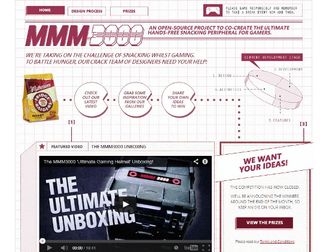
Doing that is becoming increasingly harder. The technical and creative disciplines involved in producing cutting edge digital work are only bifurcating further, leaving behind creatives who don't understand the technical sides of how search engines crawl, index and rank content, let alone the deeper technical issues involved in producing content at this scale. The technical people who do understand those things become less understanding of the language that creatives use to describe the outputs they need, and how they work. Enter the SEO industry, which is perfectly placed to act as a third component to unify these two vital elements.
How SEO's role is changing
At SEOgadget, we view the SEO of today as a technical project manager. SEOs need to be specialised enough technically to be able to go through server log files and unpick how a site is crawled; they need to be able to work with developers on frontend code to implement markup, analytics tracking code and so on, as well as a host of other things besides. Equally though, today's SEOs have to have a broad range of skills in order to be capable of working with designers and other creative production teams on commissioning and refining a variety of creative materials.
Whilst they don't do this work themselves, they absolutely need to be able to converse with those teams in the language that they use. That role is something we see other, more specialist professions struggle with. It's understandable too, as they're not as exposed constantly to all the types of content that we encourage our people to seek out. And nor should they be; as specialists, they'd be less effective in their chosen discipline if they did. The result though is a lack the breadth of understanding wide to be able to ensure a consistently high quality of output, across such a broad range of material types.
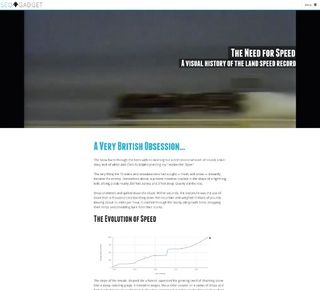
It's fair to say that we're trying to make our staff into a hybrid project manager/technical SEO. The closest analogous position in a traditional production role would be a marketing coordinator, although they tend to lack the specific technical depth we train our SEOs to have, and instead have a deeper knowledge of creative media and production, specialising in fewer areas.
Mining social data to inform prototypes
Looking at the industry itself a moment, over last year or so we've seen the future of what SEO could become. Between the emergence of Universal Analytics (finally), which allows for truly complete, campaign-oriented tracking, a much better understanding of outreach and PR and strong technical knowledge, the leading SEO agencies are starting to produce really compelling work. For two interesting demos of Universal Analytics, search YouTube for WeMo Switch Universal Analytics, and Measuring Dance Moves.
At the core of this is the proliferation and manipulation of social data across the web. It's become far easier to mine the social web to understand which content items and production houses are being featured most often by the main influencers and thought leaders in any given industry. Thanks to APIs from Twitter and its ilk, and at-scale scraping technologies like 80legs and DeepCrawl, it's possible to monitor topics cross the web. This enables brands to track in real time the ways that consumers are talking about them and subjects they care about.
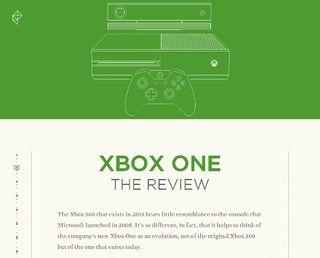
Turning to process now, let's look at how this plays out in the real world. Armed with social data, search volumes and site analytics, the creative SEO team can then work to analyse what forms of content are resonating with the specific target market the client wishes to engage with, and what messages are getting across most effectively.
This content can then be used in liaison with designers and developers to quickly prototype concepts for page layouts, complete with usable functionality that allows for a basic, but accurate demo. Those prototypes can be used to show the client the intended result. The process is starting to acquire the name 'design in browser' , and in a world where designs have to be responsive, delivers a vastly simpler, quicker workflow.
These mockups don't necessarily need to use the correct data or content, but it does need to be a realistic representation of the end product, and obviously if the actual content required is available, that only makes the representation closer to the final product. For example, if there's supposed to be a chart, it can be rendered with Highcharts using template data, or if there will be a HTML5 video running in the background, a sample video will suffice to make the demo workable.
The advantages of this are obvious; during the pitching and refinement process, the client, design and technical teams are all looking at and working with something that works as the user will finally see it. This vastly reduces the level of perceived change on the part of the client from the old Photoshop to production method of building work.
After a basic prototype is realised and the client is happy with the basic concept, this can be taken to influential individuals in the target community to garner their feedback, ideally around three to five at most (for ensuring a consistent tone for the piece, whatever it may be). This ensures that the people involved in the initial promotion and distribution feel a strong attachment to the work, as well as having a sense of ownership in the material itself.
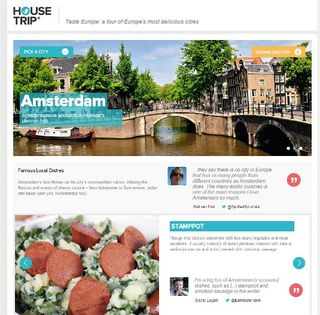
With a working, finalised prototype of the creative piece, the actual process of completing the design and finishing the project now becomes vastly simpler, as the constraints imposed by the visual design are in evidence in the system itself. Thus all the images, video, copy and other assets should be simpler to commission and add to the work.
Also, during the final content production process, the creative media teams involved can play with the prototype to ensure the best fit for their work in the piece it will end up in. This helps provide a framework for ensuring producers know where they have more creative freedom and scope flexibility, and where they're more constrained, reducing the time required for revisions and cutting room time.
Bringing it all together
Now that the piece is built, it can seem that the job is finished. However, there's a key component missing to all this at the moment, which we've seen time and time again: no dedicated area for marketing the content. Looking at two recent examples, firstly Every Shot Imaginable was launched with a YouTube channel, but without a dedicated area on the European Tour website for that content.
As a result, the site doesn't rank well for the names of its videos, or of the campaign. Nor was the campaign name particularly picked up on by the target market. If it had set up a dedicated section on the site, talking about the campaign, it would have had a far more compelling place to drive traffic to. This would also have likely produced better social engagement, as they would have been able to tailor the copy specifically around the content, as well as being able to be more innovative with the interface, testing and improving the page over time, rather than relying on the generic videos page on their site.
Secondly, the MMM3000 campaign for Mattessons resulted in a Tumblr account outranking the Mattessons site for the key terms created specifically for the campaign. Given the particularly tech-savvy nature of the group being targeted for this (gamers under 18), you can't help but believe that this was a massive oversight.
Furthermore, putting the content on a subdomain reduces the ability of the content to pass weight to the main domain. There's 69,000 results in Google for the term 'MMM3000', all related to the campaign in question, from thousands of sites, all of which could have been engaged and brought in to link to the main site, where all the videos and information are hosted. Instead, they link to YouTube, Tumblr, Facebook, Twitter and so on, creating less benefit for the brand, and no search impact.
Again, this wouldn't be tricky to fix. Simply monitoring mentions of key phrases and following up with bloggers to ensure they linked to the right places would have yielded great search benefit, as well as also creating connections with the most engaged members of the audience. Having a diverse social presence is fantastic, but it needs to be managed and corralled to derive the most benefit.

Going back to the beginning, it's all about paying attention to the details, and knowing those things exist and matter.
Through bearing in mind good site architecture, ensuring basic SEO essentials like title tags, server headers, page copy optimisation, ensuring pages are spiderable and so on, you can avoid 95 per cent of the most common issues.
Conclusion
In the SEO industry there exists an army of people who are passionate about creating amazing experiences for consumers, and who want to build amazing content for their clients, pushing to create great work.
We believe that SEO has a chance to really help not just the agencies involved, but the consumers and brands too in enabling discovery and re-discovery of the great content produced.
The search optimisation industry may not be perfect, but, at it's best, it's helping to develop better websites and create more engaging content for clients of all sizes.
It's not quite the industry we want yet, but we can see it from here.
Words: Pete Wailes
Pete Wailes is the CTO at SEOgadget, an international creative search marketing agency, and developer of the CSS library OpenDAWS. This article originally appeared in net magazine issue 252.

Thank you for reading 5 articles this month* Join now for unlimited access
Enjoy your first month for just £1 / $1 / €1
*Read 5 free articles per month without a subscription

Join now for unlimited access
Try first month for just £1 / $1 / €1
The Creative Bloq team is made up of a group of design fans, and has changed and evolved since Creative Bloq began back in 2012. The current website team consists of eight full-time members of staff: Editor Georgia Coggan, Deputy Editor Rosie Hilder, Ecommerce Editor Beren Neale, Senior News Editor Daniel Piper, Editor, Digital Art and 3D Ian Dean, Tech Reviews Editor Erlingur Einarsson and Ecommerce Writer Beth Nicholls and Staff Writer Natalie Fear, as well as a roster of freelancers from around the world. The 3D World and ImagineFX magazine teams also pitch in, ensuring that content from 3D World and ImagineFX is represented on Creative Bloq.
